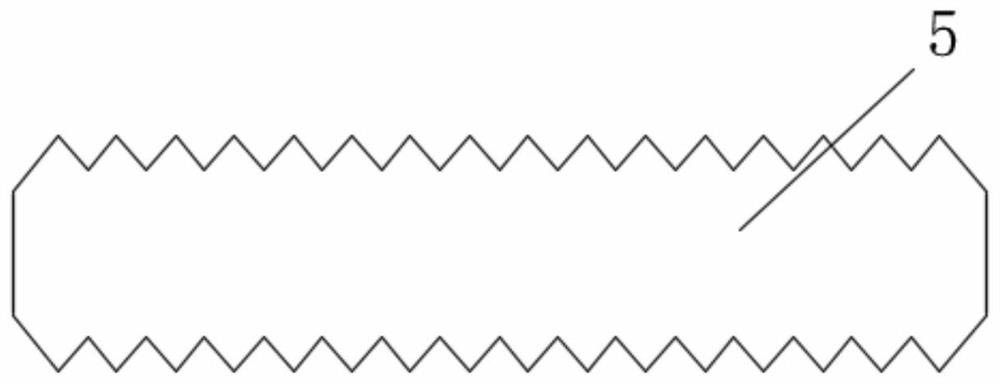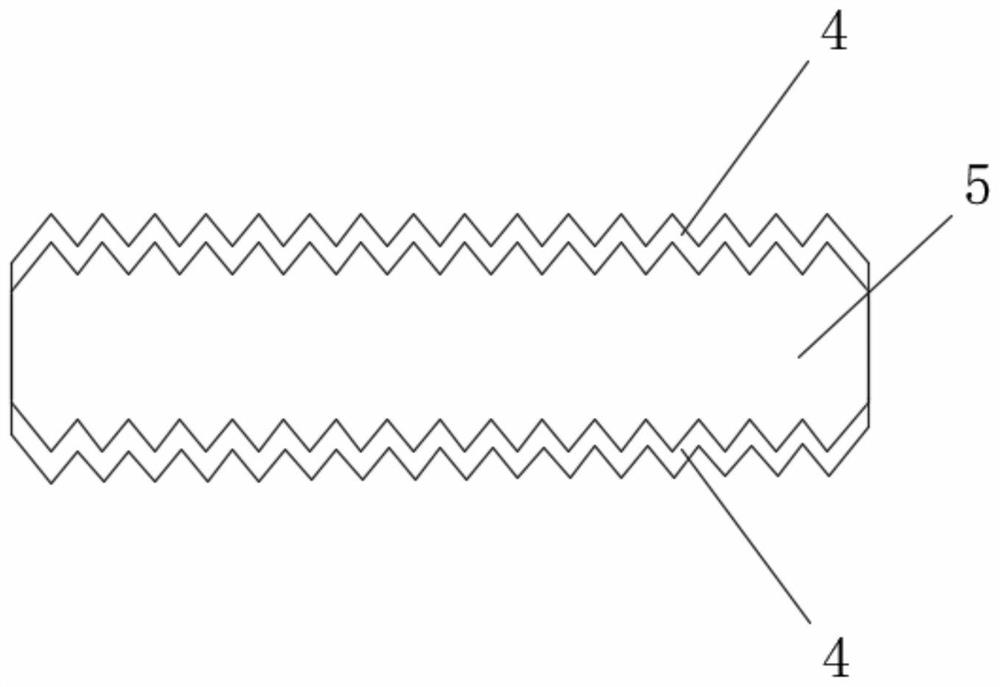A method for preparing passivation contact structure based on lpcvd secondary ion implantation
A technology of contact structure and secondary ions, which is applied in the field of solar cells, can solve the problems of augmentation and multiplication of Auger recombination, and achieve the effects of increasing fill factor, increasing electrical conductivity, and reducing contact resistance
- Summary
- Abstract
- Description
- Claims
- Application Information
AI Technical Summary
Problems solved by technology
Method used
Image
Examples
preparation example Construction
[0044] A method for preparing a solar cell with an N-type passivation contact structure of the present embodiment includes the following steps:
[0045] (1) Select N-type silicon substrate 5 with a thickness of 150~170μm, a resistivity of 0.3~2Ω∙cm, and a size of 156.75mm × 156.75mm as the substrate for double-sided texturing. The battery structure after this step is as follows figure 1 shown;
[0046] (2) Using boron tribromide as a boron source on the N-type silicon surface after the texturing treatment in step (1) to prepare a double-sided p+ doped region 4; wherein, the diffusion temperature is 850~1000°C, and the time is 50~ 80min, the square resistance is 80~100Ω / sqr, the battery structure after completing this step is as follows figure 2 shown;
[0047] (3) Select one side of the N-type silicon that has been diffused with boron on both sides in step (2), and put HF and HNO on one side. 3 , and H 2 SO 4 Etching is performed in the mixed solution to remove the p+ do...
PUM
| Property | Measurement | Unit |
|---|---|---|
| thickness | aaaaa | aaaaa |
| thickness | aaaaa | aaaaa |
| thickness | aaaaa | aaaaa |
Abstract
Description
Claims
Application Information
 Login to View More
Login to View More - R&D
- Intellectual Property
- Life Sciences
- Materials
- Tech Scout
- Unparalleled Data Quality
- Higher Quality Content
- 60% Fewer Hallucinations
Browse by: Latest US Patents, China's latest patents, Technical Efficacy Thesaurus, Application Domain, Technology Topic, Popular Technical Reports.
© 2025 PatSnap. All rights reserved.Legal|Privacy policy|Modern Slavery Act Transparency Statement|Sitemap|About US| Contact US: help@patsnap.com



